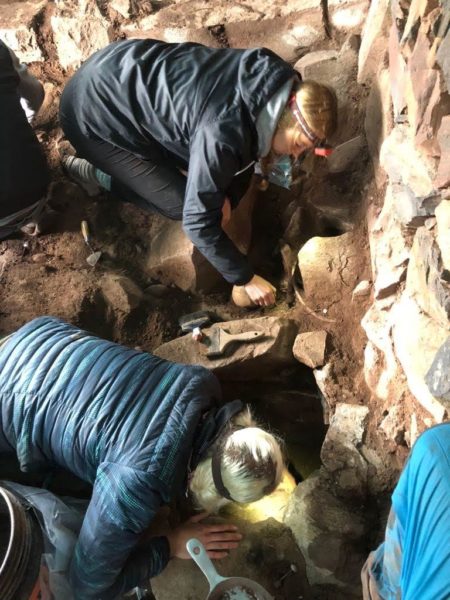Maya Krause, a Ph.D. student specializing in bioarchaeology, will spend her summer high in the mountains of Peru searching for ancient human remains after earning National Geographic’s Early Career Grant.
Rumiqolqa, the site of Krause’s research, is an archaeological site outside of Cusco. Each morning she and her team will hike their supplies up the mountain, chew some cocoa to help with elevation sickness, and spend the day sifting through dirt with wooden sculpting tools and tiny paint brushes.
Krause finds this painstaking work invigorating rather than monotonous. “It’s incredible. I mean, there’s no feeling like it. Once you get hooked on that feeling, you can’t stop because you never know what you might uncover next,” she said.
Workers’ lives
Krause hopes to uncover the bones of ancient people forced by the Inca state to migrate to Rumiqolqa to quarry rock for the wider Incan civilization (1400 – 1530 CE), allowing the construction of citadels such as Machu Picchu. The skeletal clues Krause and her team uncover should shine a light on how this people reacted to and coped with the violence, trauma and workload of forced migration.
“There are very specific features you look at on bones which can tell you a story about how someone was living,” Krause said. For example, certain lesions on bone joints are a sign of osteoarthritis. If they find more of these lesions on the upper limbs, that would indicate the arduous physical impact of rock mining, for example. Lines on the teeth, where the enamel has stopped growing, indicates childhood malnutrition.
“Maya’s proposed project is exceptional and relevant,” said Krause’s adviser, Tiffiny Tung, associate professor of anthropology. “She has taken an issue of timeless significance—human migration—and proposed a way to address those questions with empirical information: bioarchaeological and isotopic data.”

Interdisciplinary collaboration
Beyond research, Krause’s trip will foster interdisciplinary collaboration with scholars such as Steve Kosiba, assistant professor of anthropology at the University of Minnesota, who first began scientifically excavating the site several years ago. In addition to living and working with graduate students from across the country while in Peru, the National Geographic grant has allowed Krause the chance to connect with other grant recipients from a variety of fields.
“One of the best parts about receiving the grant is getting to connect with other young researchers through the grant’s online portal,” remarked Krause. “I am inspired by this network of other scholars as well as National Geographic’s Mission Statement.”

Stellar mentorship
Tung is thrilled to see Krause have the opportunity to create “long-lasting international collaborations.” But ultimately, Krause said, it is Tung’s guidance that has proved most invaluable.
“I am eternally grateful for my adviser. I chose Vanderbilt so that I could work with her,” she said.
Krause hopes her time in Peru will enable her to provide similar mentorship to the next generation of researchers. “I want to be someone who younger scholars can look up to, especially young female scientists.”
Edited to clarify that specific lesions on upper limb bones have not been documented at Rumicolca.